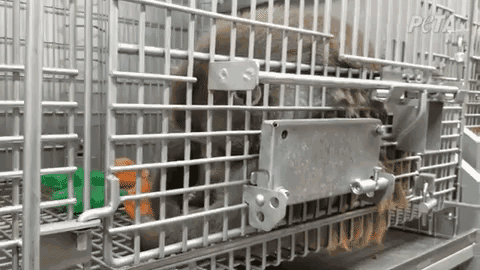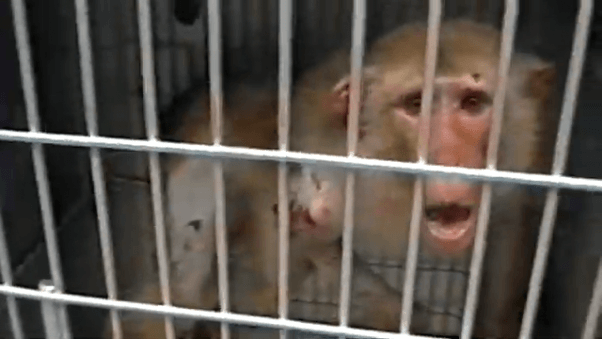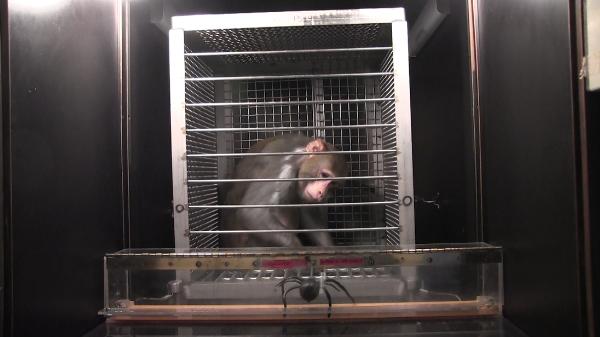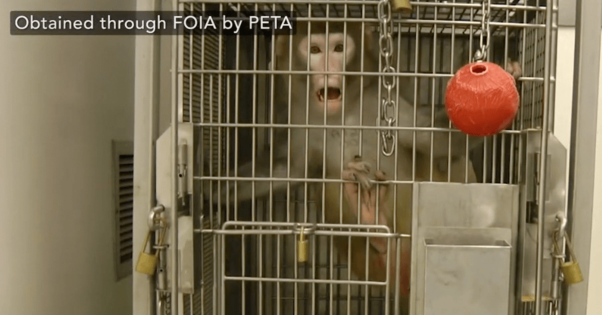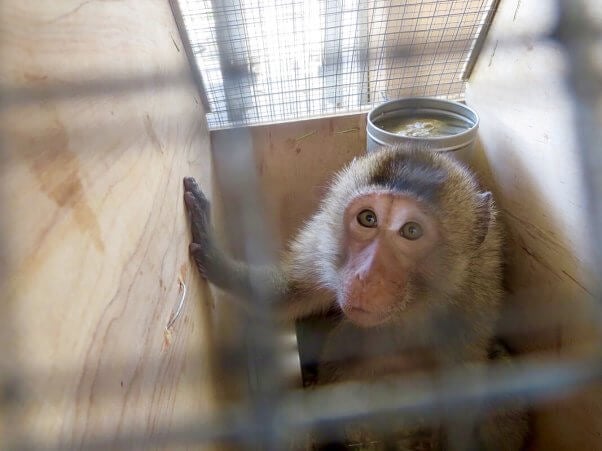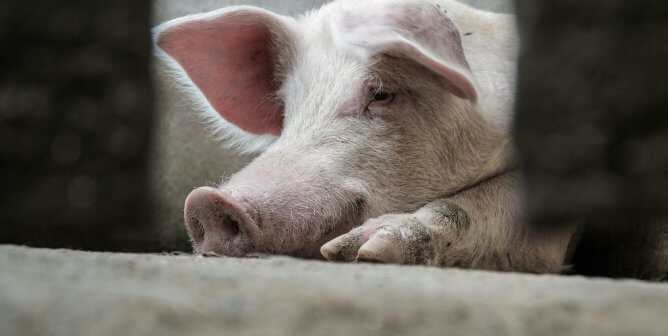Fear, Pain, and Kidnapping: 10 Terrible Things Monkeys Face This Year
Monkeys are sensitive and intelligent primates who, in their natural homes, form deep emotional bonds with troop members and forage over large areas of forests. Every year in the U.S., more than 106,000 of them are imprisoned in laboratories, where most of them are abused in archaic and invasive experiments that don’t translate to humans. Some of these terrible things are done merely out of curiosity.
Here are 10 terrible things being done to monkeys in laboratories across the country and how you can help these animals.
1. Experimenters routinely tear baby monkeys away from their mothers within the first year. Mothers scream in anguish as workers forcibly separate them from their babies. Experimenters may offer newborns a pathetic cloth “mother” to cling to.
2. Baby monkeys are being subjected to the human intruder test. Experimenters remove them from their “home” environment with family or friends and place them inside a small, unfamiliar cage. This alone is terrifying. To add to the trauma, an experimenter threatens them, such as by making prolonged eye contact. Some of these young, defenseless animals thrash in the cage or remain nearly motionless, frozen in fear.
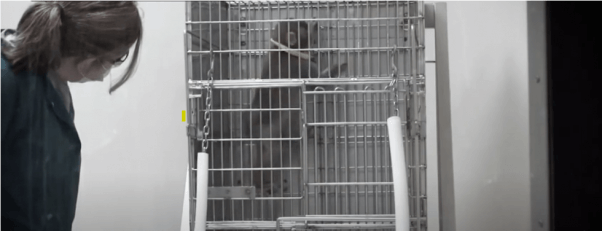
3. Laboratories force monkeys to live in small and virtually barren cages—often alone—for their entire lives. Cornelius is one of them. For a decade, experimenters at the Wisconsin National Primate Research Center have deprived him of everything natural and important to a monkey’s life. A PETA investigator often saw him sitting hunched over or with his face against the cage bars, having lost the will to live.
4. As if conditions for them aren’t horrific enough, monkeys imprisoned in laboratories are in danger of being boiled alive, thanks to the incompetence of the staff. Two rhesus macaques at the Oregon National Primate Research Center were scalded to death in their cage when a careless worker ran it through a high-temperature washer with the macaques still inside. Similar atrocities have occurred at the University of Wisconsin–Madison, the University of Texas MD Anderson Cancer Center, Yerkes National Primate Research Center, and elsewhere.
No matter the method of experimentation, 95% of all new medications that test safe and effective in animals fail in human clinical trials.
5. Experimenters exploit monkeys in fundamentally flawed HIV vaccination experiments. Monkeys can’t be infected with HIV, so experimenters instead infect them with the simian immunodeficiency virus (SIV). It’s no wonder that of the approximately 100 HIV vaccines that have been tested successfully in animals, not one of them has been shown in clinical trials to give humans sufficient protection from HIV. Yet experimenters continue to sicken and torment monkeys.
6. Portions of the brains of monkeys imprisoned in Elisabeth Murray’s laboratory are sucked out or destroyed with a toxin. Then they’re stuffed into cages, where they’re tormented with fake spiders and snakes in taxpayer-funded experiments that are as useless as they are cruel.
7. Monkeys who try to escape from their cages sometimes aren’t reported missing for days. That was the case at the Washington National Primate Research Center (WaNPRC), where monkeys are frequently allowed to escape—a blatant violation of the federal Animal Welfare Act. A monkey imprisoned at the WaNPRC went missing for two days before she was discovered trapped in a tunnel cage, dehydrated and hungry. Staff failed to report that she was missing, but the center was never so much as reprimanded.
8. Monkeys imprisoned in labs are routinely strapped into restraint chairs for other cruel purposes and are often deprived of food and water first to compel them to perform tasks. That was the case at Duke University, where an experimenter made monkeys use computer touch screens to select brand logos—such as those of Pizza Hut and Nike—based on their pairings with pictures of other monkeys. Their “rewards” for complying with this absurd experiment were small drops of fruit juice.
9. At the National Primate Research Centers and other laboratories, workers yank monkeys out of cages with poles that attach to the metal collars around their necks, strap them into restraint chairs, and electroshock their genitals until they ejaculate. Monkeys subjected to this hideous procedure are euphemistically called “semen donors.”
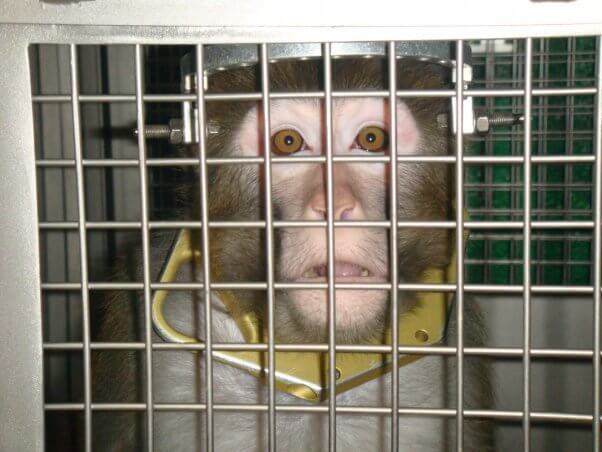
10. Thousands of other monkeys are bred on decrepit factory farms in Asia and then shipped to the U.S. to be used and killed in experiments. EGYPTAIR is one of the few airlines in the world still shipping monkeys to laboratories. On these flights, traumatized monkeys are crammed into small wooden crates and transported in the dark and terrifying cargo holds of planes for as long as 30 hours. Upon arriving in the U.S., the animals are transported to dealers and laboratories where they are imprisoned and tormented.


